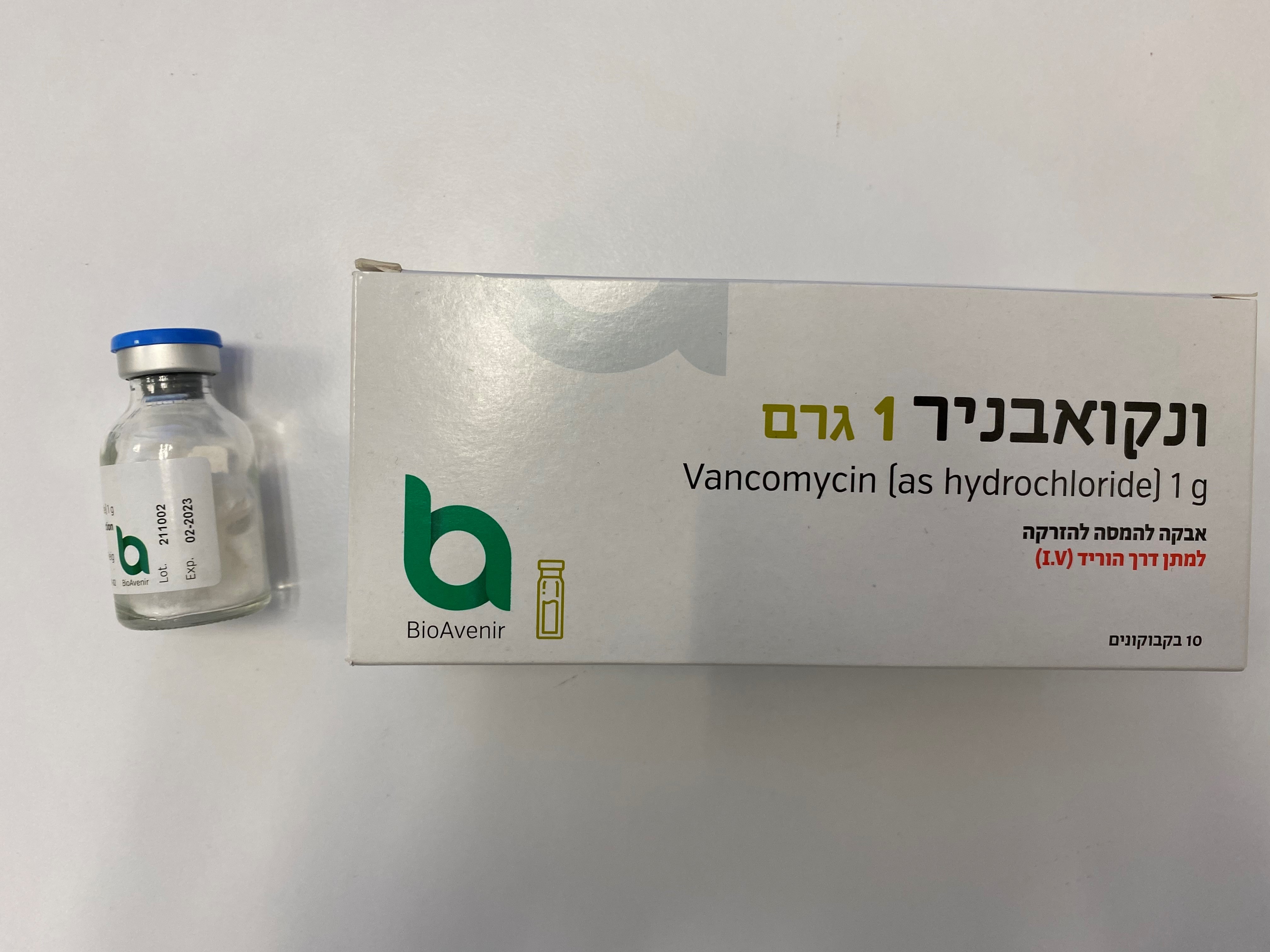Quest for the right Drug

ונקואבניר 1 ג' VANCOAVENIR 1 G (VANCOMYCIN AS HYDROCHLORIDE)
תרופה במרשם
תרופה בסל
נרקוטיקה
ציטוטוקסיקה
צורת מתן:
תוך-ורידי : I.V
צורת מינון:
אבקה להכנת תמיסה לזריקה : POWDER FOR SOLUTION FOR INJECTION
עלון לרופא
מינוניםPosology התוויות
Indications תופעות לוואי
Adverse reactions התוויות נגד
Contraindications אינטראקציות
Interactions מינון יתר
Overdose הריון/הנקה
Pregnancy & Lactation אוכלוסיות מיוחדות
Special populations תכונות פרמקולוגיות
Pharmacological properties מידע רוקחי
Pharmaceutical particulars אזהרת שימוש
Special Warning עלון לרופא
Physicians Leaflet
Interactions : אינטראקציות
4.5 Interaction with other medicinal products and other forms of interaction Other potentially nephrotoxic or ototoxic medications Concomitant or sequential administration of vancomycin and other potentially ototoxic or nephrotoxic medicinal products may increase the ototoxicity or nephrotoxicity. Nephrotoxic medicinal products may include iodine-containing contrast media, aminoglycoside antibiotics, platinum-based chemotherapy agents, methotrexate at high doses, piperacilline/tazobactam and some antiviral drugs such as pentamidine, foscarnet, aciclovir, ganciclovir, famciclovir, valaciclovir, valganciclovir, ciclosporin or tacrolimus (see section 4.4). Aminoglycoside antibiotics, platinum-based chemotherapy agents and some diuretics could be ototoxic drugs. The patient should be closely monitored, especially in case of concomitant administration of aminoglycoside antibiotics. The maximum dose of vancomycin will be restricted to 500 mg every 8 hours. Anaesthetics It has been reported that the incidence of possible adverse drug reactions (e.g. hypotension, skin flushing, erythema, urticaria, myocardial depression or pruritus) increases when vancomycin is administered concurrently with anaesthetics. To prevent these adverse drug reactions, vancomycin should be administered at least 60 minutes before anaesthetic induction (see section 4.4). Muscle relaxants If vancomycin hydrochloride is administered during or immediately after surgery, the effects of the muscle relaxants administered concurrently (in particular succinylcholine), such as neuromuscular blockade may be enhanced or prolonged. Oral anticoagulants Concomitant administration of vancomycin and warfarin may increase the effects of the anticoagulants. Numerous cases of increased oral anticoagulants activity have been reported in patients receiving antibiotics. A marked infectious or inflammatory context, age and general condition of the patient appear to be risk factors. Under these circumstances, it is difficult to distinguish between the infectious disease and its treatment in the onset of the INR imbalance. It is recommended to monitor INR frequently during and rapidly after concomitant administration of vancomycin with oral anticoagulants. Paediatric population Interaction studies have only been performed in adults. Special problems of INR imbalance Numerous cases of increase in the activity of oral anticoagulants have been reported in patients treated with antibiotics. A marked infectious or inflammatory context, the age and the patient’s general condition appear as risk factors. Under these circumstances, it would seem difficult to differentiate between the infectious pathology and its treatment in the appearance of the INR imbalance. However, certain antibiotic classes are more deeply involved: particularly fluoroquinolones, macrolides, cyclins, cotrimoxazole and some cephalosporins.

שימוש לפי פנקס קופ''ח כללית 1994
לא צוין
תאריך הכללה מקורי בסל
01/01/1995
הגבלות
תרופה מוגבלת לשימוש בבתי חולים או אשפוז יום
מידע נוסף
